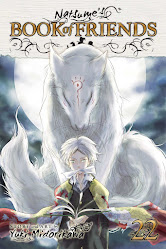Kate: There’s a Scooby-Dooby Doo element to the books, this book in particular: young “meddling” kids who reveal the seemingly horrific to be ordinary and mundane. Was Scooby ever popular in Japan? Is there an equivalent anime?
Eugene: I don’t know about Scooby, but Gosho Aoyama's long-running Case Closed (“Detective Conan”) manga and anime series (over 100 manga volumes, 900 anime episodes, and 24 feature films to date), is an undisguised homage to the Boy Detectives Club, with the protagonist sporting the nom de plume of “Conan Edogawa.”
Kate: I'm reminded of Encyclopedia Brown!
Miyuki Miyabe, the author of All She Was Worth, a very spooky suspense/mystery novel, wrote another suspense novel that uses hypnosis. I found it less satisfactory though equally gripping.
Hypnosis shows up in Edogawa's series. Is hypnosis a common trope in Japanese suspense novels? Or did it have its hey-day, now mostly passed (though not entirely), as in western literature?
Eugene: I’ve wondered the same thing. A recent episode of the police procedural Partners
centered around the use of hypnosis. My sense is that hypnosis by
itself is passé in Hollywood these days without being accompanied by
some top-secret drug or medical procedure.

In another episode of Partners, a boy is kidnapped after
witnessing a crime. The boy’s parents are Catholic, and Catholic
symbology is referred to throughout the episode. In the last scene, the
girl who initially led the detectives to the scene of the crime is
revealed to be the boy’s sister, who died of natural causes several
years before.
You can find similar stories from a Shinto/Buddhist point of view in a well-received series like Natsume’s Book of Friends.
Kate: The books so far have produced few if any deaths. Western—specifically, English—detective fiction postulates that few crimes other than murder will hold the reader’s attention. Edogawa seems to have done okay! What about Japanese mysteries in general? Is a murder de rigueur there as well?
An interest aspect of Case Closed is that though targeted at a juvenile/YA audience, its crimes are more in the Law & Order and CSI category, both in terms of the violence involved and the complexity of the cases.
Then again, the Fiend prides himself in not having to kill anybody. There is a whole mystery genre that doesn’t involve any murders, and often not even any prosecutable crimes, such as Holmes of Kyoto, Hyouka, and The Chef is a Great Detective.
Kate: Many medical dramas in the U.S. and Britain seem to fall into the latter category: a mystery but not a dead-person mystery.
Of course, a discussion of mystery tropes can't ignore the serial killer! Dr. Hiruta/the Fiend has all the marks of a serial killer (other than killing, of course), including inserting himself into the investigation. Are serial killer shows popular in Japan? To the same extent as in the U.S.? Does “profiling” like in Criminal Minds get the same attention?
Gourmet Detective Goro Akechi depends on everybody being idiots to keep the Dexter-like villainess at large, and even she quickly runs out of good reasons to kill anyone, which turns the whole thing into a nihilistic mess. (As I mentioned previously, if Danny Reagan were in charge, the series would be over in one episode.)
The much smarter Signal (based on the movie Frequency) only spends half the series catching two serial killers. The rest focuses on the newly formed cold case team and the detective who joins the unit after studying profiling in the United States.
Incidentally, the third season of You’re Under Arrest begins the same way, with Miyuki’s return from studying profiling in the United States. Along with graduating from an Ivy League school (meaning the person in question must be brilliant), this is a popular trope, and a convenient way to bridge continuity gaps in the timeline.


